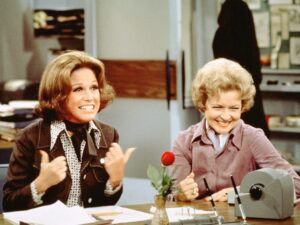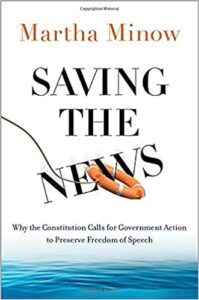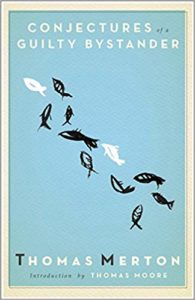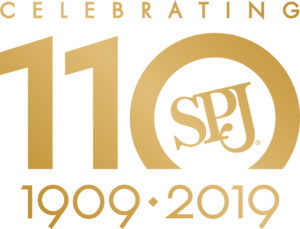Society of Professional Journalists
Mr. Grant
August 30, 2021“Despite a long and varied career, for many of us, the death of Asner on Sunday at age 91 reminded us of the loss of a fictional recreation that, perhaps for the first time in the mass media, reflected the complex reality of our profession.”
-Society of Professional Journalists, formerly Sigma Delta Chi, DePauw University
https://www.quillmag.com/2021/08/29/why-lou-grant-mattered-in-memory-of-ed-asner/?utm_sq=gtzawql0h3&utm_source=twitter&utm_medium=social&utm_campaign=spj-tweets&utm_content=quillspjblogs
Lou Grant was shot through with light and dark humor, but underneath it portrayed the nuts-and-bolts process of “the daily miracle.” It acknowledged ethical issues such as plagiarism, checkbook journalism, entrapment of sources, staging news photos and conflicts of interest. That in itself was unique among most mainstream depictions of journalism. Still, it didn’t take things too seriously: The opening credits tracked the newspaper ending up as the liner in a birdcage.
Between the sardonic observations, the show examined with unusual-for-the-time honesty such topics as nuclear proliferation, mental illness, prostitution, gay rights, domestic violence, capitals punishment, child abuse, rape, and chemical pollution.
[Bill Hirschman]
AXIOS:
Asner then starred for five years on “Lou Grant,” set at “The Trib.”
- As Screen Actors Guild president, the liberal Asner was caught up in a controversy in 1982, during the Reagan years, when he spoke out against U.S. involvement with repressive governments in Latin America.
- “Lou Grant” was canceled during the furor. CBS blamed ratings.
P.S. Betty White, 99, who played home-show hostess Sue Ann Nivens, is the lone surviving major cast member of “Mary Tyler Moore.”
[Ed Asner & Gavin MacLeon]
Ed, after his friend and actor Gavin MacLeon died in May:
“My heart is broken. Gavin was my brother, my partner in crime (and food) and my comic conspirator,” wrote Asner. ” I will see you in a bit Gavin. Tell the gang I will see them in a bit. Betty! It’s just you and me now.”
[Mary Tyler Moore and Betty White on the Mary Tyler Moore Show.]
Edward Asner died on Sunday, August 29th.
Never missed it. ~dayle
“The constitution is not a suicide pact.”
July 27, 2021“We can and must do more to regulate and support distribution of reliable news.”
CNN public editor: Why CNN’s audience deserves federally regulated news
by Ariana Pekary
Ariana Pekary is the CJR public editor for CNN. She was an award-winning public radio and MSNBC journalist for two decades. Now she focuses on the systemic flaws of commercial broadcast news. She can be contacted at publiceditors@cjr.org.
CNN, AS I’VE WRITTEN BEFORE, has amplified disinformation, relies on panel discussions that increase polarization, and has neglected voices of moderation for the sake of ratings. But is there some way to mitigate such problems, which are so common in cable news? Martha Minow, a professor at Harvard Law School, argues that the Constitution requires efforts to protect the free press––including regulation.
In Saving the News, Minow describes the merits of “deep and extensive government involvement in funding, shaping, and regulating media.” Some may balk at the notion of federal intervention in the news. But Minow chronicles how the government has granted newspapers low postal rates, invested in research that created the internet, established licensing protocols for broadcasters, and regulated telephone lines and features of digital platforms––involving itself in essential elements of the nation’s media infrastructure.
“If the ecosystem fails to provide necessary information to citizens,” she told me, “then democracy dies—and the Constitution is not a suicide pact.”
Minow argues that the First Amendment implies the existence of a functional press, so the government has an obligation to enact reforms and regulations to protect it. Many consider the industry to be a public utility, and therefore subject to regulation. And, as Minow explains in Saving the News, “Regulation of a necessary good or service also helps guard against coercion that works by exploiting people’s dependence, but it still permits private owners to operate for profit.”
The now-defunct Fairness Doctrine, which mandated journalistic balance by requiring broadcasters to air multiple viewpoints, is one example of successful oversight, Minow said. Supreme Court justices wrote in 1969 that it was a “protection for ‘the right of the viewers and listeners, not the right of the broadcasters.’ ” Public interest, Minow notes, is a vital characteristic of government intervention. Accordingly, we may deduce that the public has authority over an outlet like CNN to protect the audience.
The United States has a long, if forgotten, history of funding the news media.
In The Death and Life of American Journalism, Robert McChesney and John Nichols––cofounders of Free Press, a media reform group––calculated that “the level of government subsidy given to the American press in the 1840s was the equivalent of $30 billion in 2010 dollars.” But federal funding of public media amounted to just $465 million in 2020––an extraordinarily low amount compared with other countries.
Subsidizing public media, Minow told me, would “provide crucial competition and can stimulate for-profits to win viewers by doing better.” Sesame Street, for example, did not exist before broadcasters knew that the format would be popular. Now it’s competitive and profitable. We could use other public-private partnerships, similar to the current collaboration with ProPublica, to create new informative TV programs, she says, calling it a “public option” for journalism.
Other possibilities include tax incentives; for instance, if CNN adopted a certain set of ethical standards (see the Society of Professional Journalists’ as an example), then it could receive tax benefits for implementing procedures in the public interest. Minow said the government could also encourage measures to label news programming, to more clearly “distinguish news, analysis, and opinion.”
As a democratic nation, we may have lost sight of the need for an informed electorate. Commercial outlets dominate our media environment. But in Saving the News, Minow reminds us of our constitutional obligations. We can and must do more to regulate and support distribution of reliable news. CNN’s audience deserves it. All American audiences do.
The Society of Professional Journalists is the former Sigma Delta Chi, founded at DePauw University.
‘The Politics of Death’
November 11, 2019V E T E R A N S D A Y
Thomas Merton:
In moments that appear to be lucid, I tell myself that in times like these there has to be something for which one is willing to get shot, and for which, in all probability, one is actually going to get shot. What is this? A principle? Faith? Virtue? God? The question is not easy to answer, and maybe it has not answer that can be put into words. Perhaps this is no longer something communicable, or even thinkable. To be executed today (and death by execution is not all uncommon) one has no need to commit a political crime, to express opposition to a tyrant, or event to hold an objectionable opinion. Indeed, most political deaths under tyrannical regimes are motiveless, arbitrary, absurd. You are shot, or beaten to death, or started, or worked until you drop, not because of anything you have done, not because of anything you believe in, not because of anything you stand for, but arbitrarily: your death is demanded by something or someone undefined. Your death is necessary to give apparent meaning to a meaningless political process which you have never quite managed to understand
-Conjectures of a Guilty Bystander
Equal Justice Initiative
‘African Americans bravely served in the U.S. military for generations. But instead of being treated as equal members of society, thousands of black veterans were accosted, attacked, or lynched.’
https://eji.org/news/remembering-black-veterans-and-racial-terror-lynchings
~
Society of Professional Journalists
“Aside from deep understanding and technical knowledge of the military and veteran issues, vets bring with them objectivity, neutrality, and ability to work in crises—all valuable attributes for newsrooms.”
The new nonprofit Military Veterans in Journalism wants to bring more military knowledge and experience into the media
Since the attacks of 9/11, the United States has been in a perpetual state of fighting, in places like Afghanistan, Iraq, Syria, Yemen, Somalia, and Libya. About 7,000 American troops have been killed and at least another 50,000 wounded. One study estimates the U.S. federal price tag of the Iraq and Afghanistan conflicts at $5.9 trillion.
Despite more than 18 years of war, America’s newsrooms have been shockingly negligent in hiring reporters who know these conflicts and their impacts best—our veterans.
Only 1.1 percent of media workers in the U.S. are post-9/11 military veterans while about 7 percent of Americans have served in the military, according to U.S. Census Bureau data.
https://nieman.harvard.edu/articles/we-need-more-veterans-in-americas-newsrooms/?utm_sq=g8r4t135ev&utm_source=Twitter&utm_medium=social&utm_campaign=spj-tweets&utm_content=Articles
College Journalists speaking up for Free Speech
August 25, 2019Society of Professional Journalists
[Founded as Sigma Delta Chi at DePauw University in 1909]
“The real crisis of campus speech lies elsewhere—in the erosion of student newspapers…. Today, these outlets are imperiled by the same economic forces that have hollowed out local newspapers from coast to coast.”
Bureaucrats Put the Squeeze on College Newspapers
The corporatization of higher education has rendered a once-indispensable part of student life irrelevant, right when it’s needed the most.

In this this, Sunday, April 22, 2018 photo, while pushing up against a deadline, students collaborate to put out the upcoming edition of the Washington Square News, New York University’s independent, student-run, newspaper in New York. College journalists are speaking up for themselves in a coordinated campaign to combat some of the same forces that have battered newspapers across the country. More than 100 college newsrooms across the U.S., including the Washington Square News, are using social media campaigns, public awareness events and editorials Wednesday, April 25 to call attention to the important roles they play. (AP Photo/Kathy Willens)
The Atlantic
August 23, 2019
When professional pundits talk about dangers to free expression on campus, they typically refer to a handful of incidents in which colleges have revoked invitations for controversial speakers. This, however, is a fringe issue, confined to a small number of universities. The real crisis of campus speech lies elsewhere—in the erosion of student newspapers. These once-stalwart publications have long served as consistent checks against administrative malfeasance, common forums for campus debate, and training grounds for future professional journalists. Today, these outlets are imperiled by the same economic forces that have hollowed out local newspapers from coast to coast. And unlike their professional peers, student journalists face an added barrier: The kind of bureaucratic interference Liebson met at Stony Brook is becoming the norm for student journalists.
Few school newspapers are financially independent from the institutions they cover, says Chris Evans, president of the College Media Association. As a result, college administrators hold powerful leverage over student journalists and their faculty advisers. The need for aggressive student news organizations is as acute as ever. But image-obsessed administrators are hastening the demise of these once-formidable campus watchdogs.
The AAUP report notes a “growing tendency” for administrations to conduct important business matters “behind closed doors.” Administrators slow-roll student journalists’ requests for public records. At some schools, newspaper advisers have been instructed to conduct “prior review” of student articles before publication, a precaution intended to ensure that anything that could gin up bad publicity never makes it to print.
The decline of college newspapers has taken place against the backdrop of a decades-old power shift in the American university. As the Johns Hopkins University professor Benjamin Ginsberg chronicles in his 2011 book, The Fall of the Faculty, administrative bureaucracies at American universities have grown much faster than the professoriate, a trend that Ginsberg decries.
“University administrators are no different than any other corporate executives or heads of government agencies,” Ginsberg said in an interview. “They’re engaged in constant spin designed to hide any shortcomings that they or their institution might have.”






